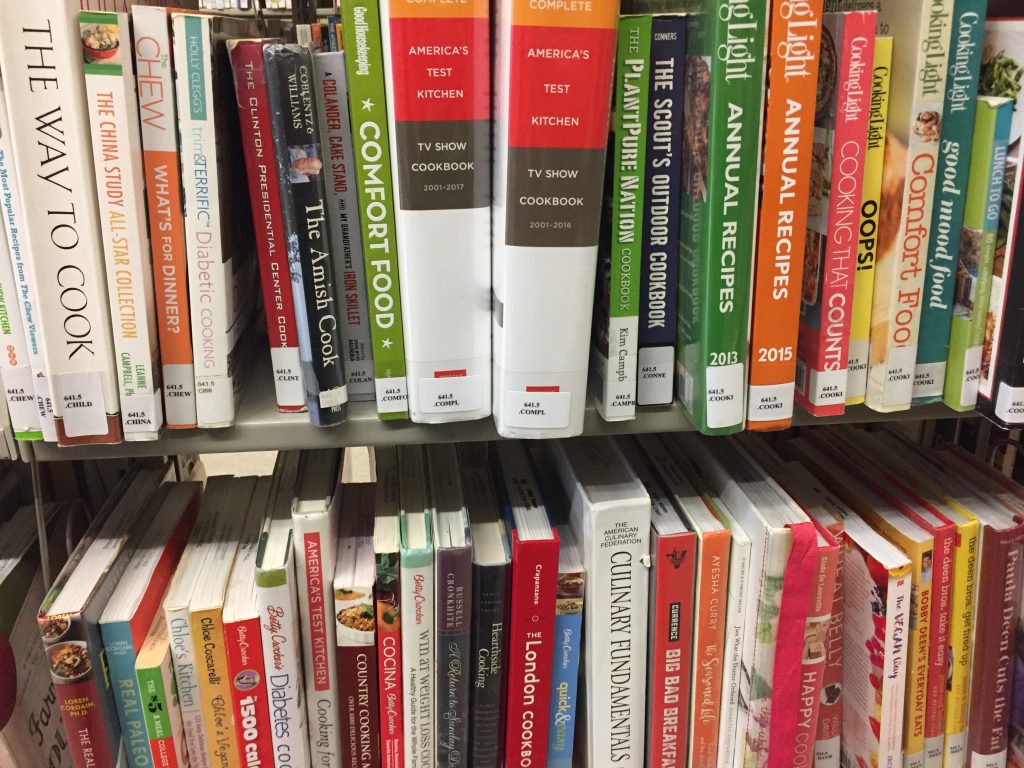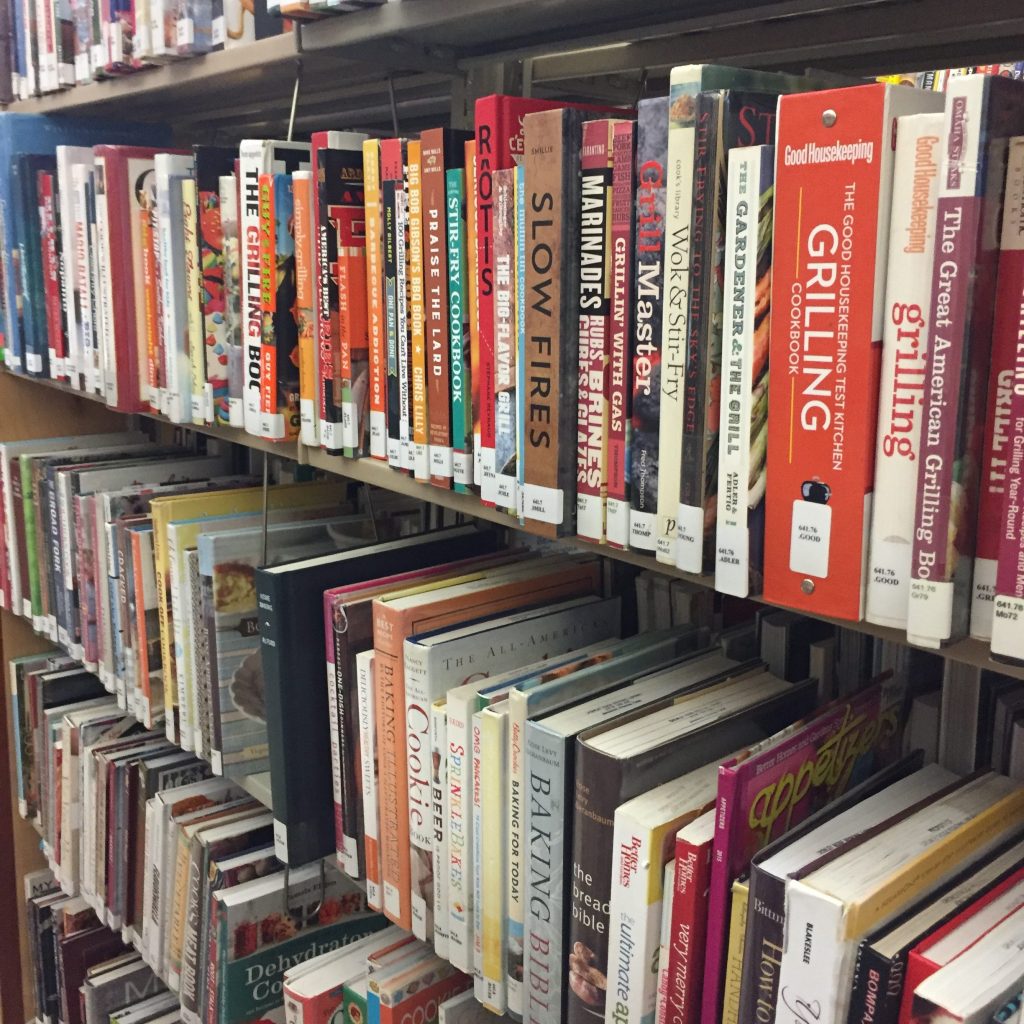
I was in grad school and had decided to buy a cookbook. I didn’t cook, except for scrambled eggs and pasta. I had stopped using the crisper drawer in my fridge because it had become a kind of graveyard for apples. And yet here I stood in Barnes & Noble, staring down an entire wall of options. I had only a vague idea what I wanted and no idea where to find it. If you’ve been in this position recently (or have avoided the bookstore for fear of experiencing it), bookmark this post (pun intended) and use it to find your next meal. I’ve listed, in order, the steps I use today to narrow down my options.
Finding a Cookbook That Fits Your Needs
1. Use a real book. Not an e-book. Not a website. Not even a blog. (Not even this blog! If you’ve spent much time on this site, you’ll have noticed that I’m less interested in whether you’re using my recipes than in whether you’re trying to think differently about dinner.) Call me old-fashioned, but there is something about the finality of a book that forces us to choose. There are only so many recipes. Only so many of them include fish. There are only so many fish at the grocery store. So, what are you having for dinner, salmon or tilapia?
2. Start at the library. You probably have a public library where you live, and it probably has a plethora of cookbooks. Even if you’re ineligible for a card (which you probably aren’t, even if you’re a student), nothing is stopping you from plopping yourself on the nearest chair with a stack of cookbooks to mine for ideas. If you start at the library, you can grab anything that looks even remotely interesting without investing a dime. Then, once you know what you like, purchase your own copies.
3. Find a book with inspiring pictures.* Simply put: let’s suppose that you, like me, have no clear mental image of a spring vegetable confit. If your book has no pictures, what will you do? Google it? Skip it? Make it anyway because it sounds fancy? Most of us will turn the page in search of something more familiar. Now suppose there’s a picture, but it’s a boring picture. The mood isn’t quite right and the lighting hits all the wrong places. You’re almost certainly going to flip the page now, aren’t you? (Note: you can also use visual appeal to help you determine which books to pull off the shelf in the first place; many have photos that extend to the spines.)
4. Avoid books that rely on processed foods. This is often a problem with cookbooks that claim to use only a handful of ingredients per recipe. Glance through the lists of ingredients and look for things like “one can cream of mushroom soup” or “one package taco seasoning.” Many of these pre-packaged foods are full of so much sugar and/or sodium that they will overwhelm the flavor of everything else (and won’t be very healthy). It’s okay to use a can of crushed tomatoes or a packet of frozen spinach. What you want to watch out for is an overuse of “single-ingredient” items that really have multiple other ingredients hiding inside them.
5. Decide whether the ingredients stress you out. Do the recipes all call for seventeen different components? Do those lists include things like tamarind or kelp noodles? Most writers provide a resources page to help you locate unusual ingredients, but be prepared for shipping charges when ordering online! It’s okay if you’re holding a book that calls for the same unfamiliar ingredients over and over, as is the case with many ethnic cuisines. It’s also okay if there are only one or two strange items per recipe, or if the author seems to love radicchio and you don’t even know what it is. What you want to notice is whether you feel overwhelmed. If you do, put the book back and make a mental note to reconsider it at a later date.
6. Keep your options open. Not literally. What you should actually do, after an initial glance to see if a book sparks your interest, is make a stack. Whether you’re visiting the library or the bookstore, hold onto anything that seems compelling when you first flip through it. When your stack is of an embarrassing height (i.e. when you are afraid that adding any more books will provoke dirty looks from the people who have to re-shelve them), go find the nearest chair and have a closer look.
7. Read the introduction (or first chapter). This is the part where you get to know the writer’s tone and mindset. Does the prose feel pretentious? Too casual? Unnecessarily complicated? Many authors use this section to explain why they cook, why they make certain choices about ingredients, and what you should know as you prepare their recipes. I’ve gained much of my kitchen awareness from these passages, so don’t overlook them.
8. Count the number of recipes you would actually want to cook. If I can find at least ten recipes that look compelling, I usually decide the book is worth my time (and remember, I’m starting at the library, so I don’t need to know yet if the book is worth my money). Sometimes I find that I like the idea of a book, but I’m not actually interested in cooking most of what’s inside.
9. Look at the recipes you’ve selected and figure out how long it would take you, personally, to cook them. Are you slow with a knife? Do things need to rest overnight? Would you need to prep anything in the morning before work? I am not good about making involved recipes mid-week; I can handle maybe one or two per grocery cycle. Any more and I end up staring at my fridge in frustration, wondering why I have so much produce that hasn’t chopped itself.
10. Skim a few recipes at random and look for the words “salt and pepper to taste.” If you’re finding this phrase (or some variation) over and over towards the ends of the recipes, proceed with caution. To make truly flavorful food, you need to add the salt early on, not at the very end. (The exception is finishing salt, such as Maldon salt or fleur de sel. This salt is supposed to be added just before serving.) It’s worth noting that certain recipes contain other salty elements such as anchovies or briny cheese, so there is less need to use actual salt crystals. But if you’re paging through a book that seems to treat salt as an afterthought, be forewarned: your results may be bland.
If you’ve followed all the advice in this post, you should now be sitting in your library with a stack of five or ten books. Look at these side by side. Set aside the two that look the most interesting and get rid of the two that look least interesting. Of whatever is left, choose half to take with you. You always want a few extra books, because you might be surprised by which ones you’re the most curious about midway through the week. Happy reading and happy cooking!

* Of course, presentation does not always equal taste. I’m sure I’ve missed a lot of great recipes because they weren’t accompanied by full-color close-ups. I’ve also made some terrible dishes because the pictures looked compelling, and I’ve undoubtedly posted some pictures that don’t look enticing (but the food tasted great!). That said: if you’re choosing from three hundred cookbooks, go with the ones that make your mouth water.


